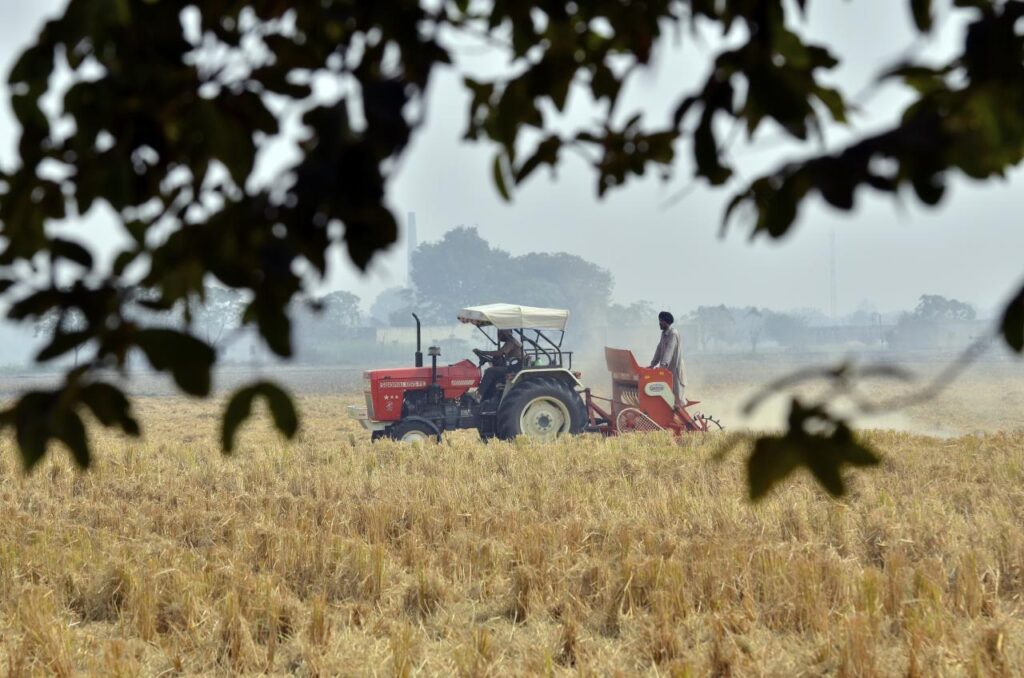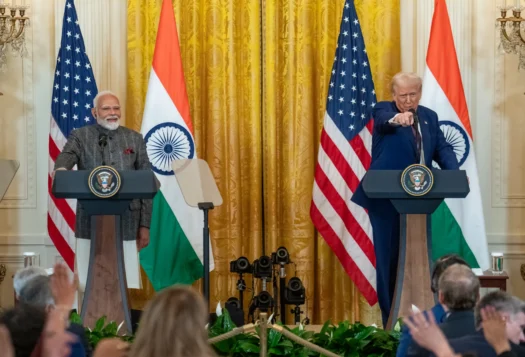
As a country where the farmers had grown “enough food” to fill in the gap left in the food market due to the ongoing Ukraine-Russia war and emerge as a “reliable alternate source for steady food supply”, the sudden U-turn in India’s stance raises two critical questions. First, is India able to address the challenges that have been long plaguing its agricultural sector. Second, is this an acceptable foreign policy gaffe for a country that projects itself as an emerging superpower?
Looming Food Insecurity: The Impact of the Ukraine-Russia War
As Russia’s invasion of Ukraine enters its fourth month, global food markets have faced heavy disruptions. The two fighting countries together account for nearly 30 percent of global wheat exports and between 2017 and 2021, the two countries supplied nearly 274 million tons (MT) of wheat to the world. Countries like Egypt and Indonesia rely nearly entirely on these two countries to fill up their wheat coffers.
With the war, Ukraine, the world’s fifth largest exporter of wheat, is unable to export grains to the world. Russia is adding further to its list of war crimes by robbing Ukraine of its wheat produce. Faced with sanctions against Russia, most countries are now also unable to turn to the world’s largest exporter of wheat, adding to the food insecurity woes.
The drop in supply has been compounded other external factors: less than usual supply from other top wheat exporters, a fertilizer shortage, weather abnormalities impacting grain output, price per ton jumping from USD $325 to USD $450—all severely impacting low-income countries and communities. At a time like this, India’s back and forth on its wheat export diplomacy has a magnified impact on global food security as well as its own international standing.
India’s Promises to Feed the World
Indian Prime Minister Narendra Modi’s grand announcement that India’s farmers were ready to and capable of feeding the world appeared almost opportunistic given the immediate exigencies facing India and the world. India, the only country that receives fresh harvest during this season, could have used to its food diplomacy to strengthen bilateral relations and further cement its position as a major player. Countries bearing the brunt of the current food crises, dubbed the worst the world has seen since World War II, would have benefitted from the help of the world’s second-largest wheat producer.
At a time like this, India’s back and forth on its wheat export diplomacy has a magnified impact on global food security as well as its own international standing.
Even before the government made any official comments about its willingness to help, the country saw a considerable rise in wheat exports. From just 2.1 MT in fiscal year 2020-21, India ramped up its exports to 7.85MT in 2021-22. For the quarter April-June 2022, the country had set in place contracts for 3MT. The steady stream of exports would have helped reduce the food insecurity, tackle high inflation rates and even tackle potential political stability. Egypt, the world’s largest importer of wheat, has seen “bread riots” in the past and its population relies on wheat subsidies. It comes as no surprise then that the country has officially partnered with the Indian government for its imports.
The gains would not have simply benefited countries suffering from wheat shortage. In addition to being able to cash in on the rising wheat prices, India would have proved that it is a responsible nation with the capacity to help in times of uncertainty or crisis. This comes at a time when India faces significant criticism for its stance on the war in Ukraine: India abstained from any votes against Russia and shied away from harsh public criticism of Russia’s invasion. Amping up exports when the country was expecting a sixth bumper crop season would have softened the diplomatic blow the abstention dealt India.
Confident about its food reserves, Modi declared that if World Trade Organization was willing to revisit its rules surrounding food exports by governments, India was ready to step up. The gung-ho attitude was reflected in the government’s advanced talks with the World Food Program as well as its willingness to streamline cargo trains and port facilities to assist with the foreseeable procurement, storage and export strains.
Ban on Wheat Exports: Explained
Despite its very public promises, the Indian government announced a ban on its wheat exports on May 13. The government has included a few exceptions: although the country will not accept new wheat exports, it will honor existing orders as well as a direct government-to-government engagement.
“Wheat diplomacy” seems to have followed in the footsteps of India’s failed “vaccine diplomacy.” In 2021, India first positioned itself as a global provider of COVID-19 vaccines and then suddenly banned and finally limited vaccine exports to its neighborhood (according to “neighborhood first”). In both instances, there has been a juncture between India’s rhetoric and actions and the country’s actual capacity to first provide a steady supply to its own citizens.

The export ban is not without reason, as India does have a 25MT surplus. But this supply has been amassed over a period of five years. This translates to just 5MT per year, which pales in comparison to the Ukraine-Russia’s 60MT surplus per annum. India also expected an 111.32MT bumper harvest season to further bolster its surplus but thanks to a massive heatwave in parts of India, the country has revised its forecast by 6MT.
With growing uncertainties and rising food prices, predating the ongoing war, India does need to maintain its food reserves. This is especially important when the government must procure massive amounts to feed its poor and vulnerable through its public distribution scheme. Considerable exporters (together eight percent of EU wheat exports)—Bulgaria and Hungary—have also imposed food protectionist policies to bolster their own reserves. However, a sudden 180-degree turn in India’s policy, much like its vaccine diplomacy, lays bare the country’s inability to effectively provide for its large population and follow through on its ambitious foreign policy.
In addition to lower-than-expected procurement, India’s inadequate infrastructure renders it unable to seamlessly procure from its rural areas, transport wheat to its ports and store the grain while the exports are procured—all impacting its export plans. The fact that only two ports along the western coast add to the choke block. Second, even with India willing to export its wheat, it is unclear if countries are willing to accept grain that has previously been rejected on grounds of low protein and high pesticide content.
A Mismatch Between India’s Overtures and Actions
Beneath the sudden cautious approach towards food security lies a graver concern: a disconnect between reality and government public positioning. The government articulated a willingness and ability to export wheat in speeches delivered by Prime Minister Modi, minsters of finance, external affairs and commerce. Subsequent meetings with railways to assist with logistics, wheat lobbies and other sector-experts suggested that the government had thought through all possibilities. This intent, however, was not grounded in reality—better represented by the ban.
The wheat exports would have allowed India to assuage global partners as it held on to its long-term interests; instead, the sudden ban has further eroded India’s “diplomatic currency.”
Instead of falling into the trap of overpromising and over-stretching its resources, India needs to realistically secure its strategic, national, and domestic interests. Its interests and its commitments must match. India has tip-toped around any criticism of Russia, which is its largest defense partner. Undeterred by the criticism from its other partners, India understandably decided to safeguard its strategic needs, hence the increase in oil exports from Russia to India at a time when Russia is facing growing sanctions. It makes sense why, then, India, which has otherwise been a small exporter of wheat, expressed its interest feeding the world at a time of crisis. The wheat exports would have allowed India to assuage global partners as it held on to its long-term interests; instead, the sudden ban has further eroded India’s “diplomatic currency.”
India’s Agriculture Sector: Another Victim of Government’s Flip-Flop Policies
As the government has prioritized its strategic concerns (often despite limited capacity), Indian farmers—who wait for such price blips to finally be able to cash in and earn considerable profits—have taken the biggest hit. The current wheat ban (onion seeds were later added to the list) is reminiscent of the frequent bans by India on onion exports. With bumper crops, prices drop and farmers get high yield but low profits/MT. To help the distressed farmers, the government provides export incentives and then, as the domestic prices begin to rise, bans are introduced to control crop prices. With the wheat ban as well, farmers who had hoped to make the most of the windfall by holding on to a percentage of their harvest after now faced with a slump in wheat prices at India’s wholesale markets.
The Bharatiya Janta Party-led government, it appears, is unable to shake off the curse of a reform-desperate agricultural sector. In 2020/2021, farmers blocked roads to India’s capital to protest against the proposed influx of private parties into the sector as well as absence of a guaranteed minimum price for crops. Ban or no ban, the government will eventually have to substantively relive the agricultural sector of its stresses, especially when most of the country’s population relies on it.
***
Image 1: 2011CIAT/NeilPalmer Alliance of Bioversity via Flickr
Image 2: 2011CIAT/NeilPalmer Alliance of Bioversity via Flickr


